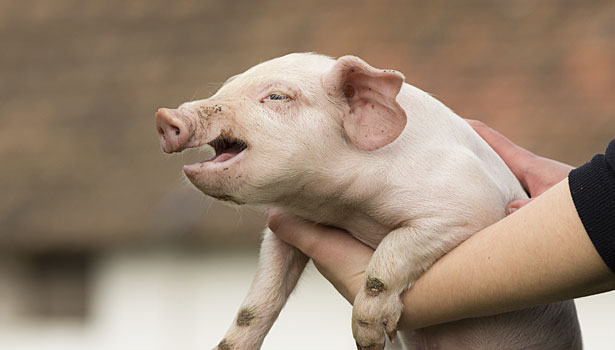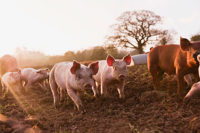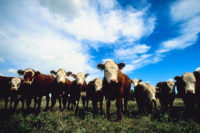Humane handling and stunning audits have become a normal part of verification activities for quality assurance personnel at most North American slaughter establishments. Most large operations engage in some form of daily animal handling and stunning monitoring, while small and very small operations are just beginning to bring internal audits and monitoring into the fold. The development and continuous improvement of animal handling and stunning verification — for customer or regulatory compliance — is a process. The most refined verification systems have taken dedicated people years to develop. Let’s take a look at some of the process.
Build a strong foundation
A well-designed, but simple, systematic approach to animal welfare is a valuable tool for laying out the standard practices that impact animal welfare during handling and stunning. A systematic approach applies the principles of Hazard Analysis Critical Control Points (HACCP) to humane handling and stunning procedures. Developing a systematic approach may seem like a daunting task considering the overall mass of the HACCP program that is sitting on your shelf. It is important to remember that the HACCP plan in use today has been established over the decades of its existence and was much smaller in its earlier years.
When it comes to developing a systematic approach from the ground up, it is useful to download a copy of the AMI’s Animal Care and Handling Guide from www.humanehandling.org. Turn to the audit forms and start by writing standard operating procedures (SOPs) that address each of the core criteria within the audit form: Stunning Efficacy, Bleed Rail Insensibility, Vocalizations, Electric Prod Use, Falls, and Willful Acts of Abuse. The SOPs that are developed should be used as the background for new and existing employee training. The AMI Animal Care and Handling Audit Form can be adapted for use as the monitoring tool for a simple systematic approach. Those who have been through the systematic approach design process before can attest that much of the process involves information gathering and organization. If you are building a new program, remember to be patient and keep it simple.
Choose the right combination of audits
There are three classes of audits that can be used for monitoring and verification of humane handling and stunning activities. They are first-party, second-party and third-party audits. A first-party audit is conducted by slaughter plant personnel, typically as part of systematic approach monitoring activities. A second-party audit is conducted by a customer. As an example, a beef slaughter facility that sells boneless trimmings to a grinding operation may be audited by their customer to verify compliance with contract specifications. Third-party audits are conducted by a contractor from an auditing company that has no professional ties to the requesting facility or its customers. Many customers require third-party audits on an annual or semi-annual basis in their contracts. In the end, a combination of first- and third-party audits is most common. Most large operations will conduct internal first-party audits at least once daily while smaller operations may conduct fewer first-party audits depending on volume of animals and availability of personnel.
Respond to deviations
Whenever a deviation from acceptable conditions is identified, corrective action must be taken. This may seem like a simple thing to do, but it takes commitment to follow through on corrective measures when internal first-party audits reveal a deviation. Communication is key in responding to deviations. As an example, imagine a quality-assurance technician has identified something wrong in the stunning process because more than 95 percent of the cattle their plant slaughtered during a first-party audit were not unconscious on the first shot. In this case, the responsible management personnel should be contacted as soon as the audit is failed so corrective action can be taken. A timely response can prevent a lot of animal welfare, regulatory compliance and product quality issues.
Consider available technology
Most of the cattle and hogs slaughtered in North America are monitored through remote video auditing (RVA) during the handling and stunning process. RVA conducts short audits — spread throughout the workday — that are unannounced. One of the features of RVA that makes it very useful is that workers do not know when the audit is taking place. This allows a more realistic picture of compliance with humane handling and stunning standards. It is not difficult to imagine how the presence of an auditor may impact employee behavior. It is human nature to put forth our best behavior when we are being watched. RVA helps to address that challenge.
Stay committed
The time it takes to develop an animal-care and handling assurance program can be daunting, but the result is worth it. A well-built animal-care and handling assurance program will add strength to your business by providing a way to catch potential problems before they become too big to manage. Because most things that are worthwhile are neither easy nor quick to develop, patience is one of the most important tools in tackling the challenge of animal-care and handling program development.










